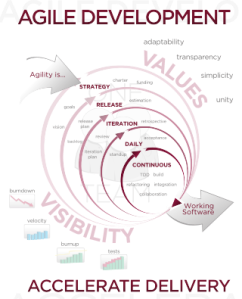
(Credit)
As anyone who has been reading my posts knows, I pretty much, for the first time in my life, followed a new year’s resolution – that of joining an aerobics class (and, for the cynics amongst you, I have been a regular attendant all year long! so there!). It’s a fantastic class – very high energy/ great variety/ amazing set of folks – who have now become friends/ much fun and laughter/ and some great weight-loss and fitness stories. I ofcourse, was always a bit of a laggard here – agewise probably the oldest, fitness wise the worst, weightwise the most! But i persevered because I figured WHATEVER i do here, since its exponentially higher than what I did before (i.e. nothing), HAS to do my body good.
Also, interestingly, while I’m a big fan of goal setting, and of baby steps to achieve that goal (click on this link to see an earlier post), as well as result orientation (click on this link to see another post), in this case, I didn’t have a weight loss goal (my theory being, when I’m sooo far from my goal, let me just break it up into the task of going everyday, and not the end result – as Hazrat Nizamuddin said, faced by the imminent return of King Ghias-ud-din Tughlaq apparently to kill him,”Dilli abhi door hai” – i.e., Delhi is far away yet!)
But of late, I see the gap between the class’ abilities and performance, and my own capabilities – widening rapidly, to the extent that I am wondering if I should really go on here in the new year!
This really started me thinking about motivation – how much is too much; leading by example; and, the process of natural selection obviating perhaps HR instruments like bell curves.
See, for most of us, the pursuit of excellence is not an option (click here to see an earlier post on this) – and neither is leading by example/ getting our hands dirty/ showing others how to do stuff (click here to see another earlier post on “doing vs. managing”). As a corollary, we also learn to “play to our strengths” (omg, here’s ANOTHER earlier post on that!), so we gravitate towards professions/ hobbies/ people/ organisations that help us maximise potential and performance.
So, how does the whole “learning/ training/ upskilling” thing play out here. At what stage does it become evident that you are out of your league? And how does one cope with it?

(Credit)
In nature, the process of “Natural Selection” automatically decimates those who can’t cope, and perpetrates the “survival of the fittest”. This means, you either “shape up or ship out” in corporate lingo, something I’m sure we’ve all heard quite often. To draw a corporate parallel, the bell curve kind-a sorts everyone on a relative scale, and most companies have a policy of weeding out those folks that fall beyond the lower sigma range repeatedly.
It then links with this thought many of us have very often in our jobs – “Is it better to be a star in an ‘average performing” organisation, or to be one amongst many bright folks in a really top notch one. I recently read Yahoo CEO Marissa Mayer’s biography. She mentions this episode (which she has talked about very frequently) about her Piano Teacher’s daughter Laura (see slide 3/15), who basically made it to the senior volleyball team, because she opted to “play with and therefore learn from the best”.
So, the question is – should we endorse mediocrity? Looks like, no! So, try try again seems to be the mantra. But, to look at it from the other side, is there a role that the leader/ motivator/ mentor plays? Again, unequivocally, a yes!
I remember a picnic we had gone to from our old office. Part of the offsite activities were ziplining and rappelling. Now, for most folks, (including me) it was a first timer. We had a few adventurous types who went early (and, may I say, thoroughly enjoyed themselves!). Then it was my turn – now I have NO head for loss-of-gravity type stuff – I don’t even like getting on fast going elevators! I went and pretty much kicked and screamed my way through. As i disembarked, one of the folks asked me – (thinking I would say nice motivating things and so inspire the others who were sitting on the fence) – how was it. I shuddered and said “never again!”. Pfffttt – that was the sound of the gumption fading away form the others! I forgot for a bit my usual role of motivator :(. It took a lot of coaxing and motivation from my business partner Shoma then to tell the others to “get on/ its fun/ i did it so can you/ when was the last time you tried anything for the first time” type of stuff. Finally, most folks did it!
A trashy romance book I read long ago (sometimes you find pearls of wisdom embedded there) said – “Always hitch your bandwagon to a boss who is already a star – NOT one who is intent on climbing the ladder himself/ herself”. While this was not the case in my ziplining episode, the fact remains that a true leader, to motivate others, has to be VERY secure in his/ her own position.
So, coming back to how much does one raise the bar if one is the leader – do you set it at the Highest Performers, the Lowest Common Factor (Blackwell’s limiting factor), or the median? I think the answer is – show the end game/ highest possible – since that is always inspiring; but also show the path to achieving it by breaking up the goal. So, the whole repetition/ continuous improvement/ training paradigm does precisely this. And, the whole reward set-up (I play Tetris on my iphone; and LIVE for the rewards that I can get/ the challenges I can complete – and the resultant sense of achievement I own upto!)
What however the employee/ trainee needs to do maybe is get a sense of – am I being naturally selected OUT of the bell curve sigma range – and so, should I look for other avenues. NOT BEFORE I have tried to make it work, ofcourse, but only after!
Points to ponder? To help you along, as a final piece of reading, there’s an oldish article on this from Stanford which I found interesting.
As for me, I think I will continue in my aerobics class for sometime – unless I get naturally selected out of it!!! What say?










